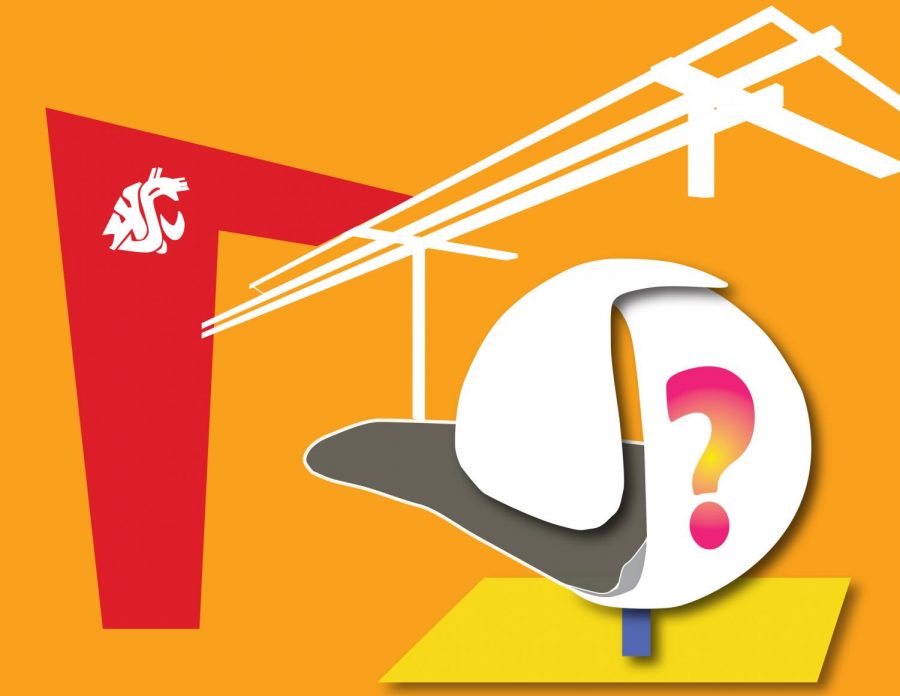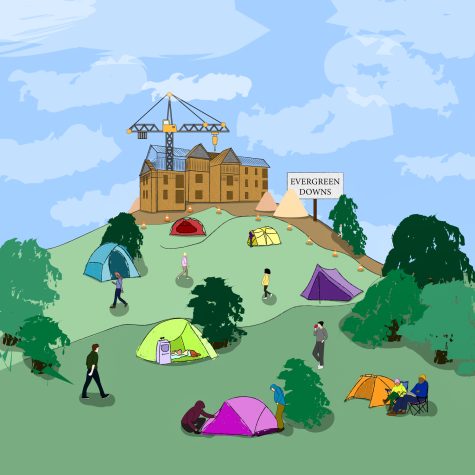OPINION: Get rid of the nap pods in the Chinook
Nap pods don’t serve any real purpose in the Chinook besides looking weird
These nap pods in the Chinook are an eyesore and aren’t used.
March 6, 2020
A common feature of any tour of the Chinook, whether it be during an ALIVE orientation session or a campus visit, is the Nap Zone, which cost WSU around 40,000 dollars. The Nap Zone is located on the lower level of the Chinook, tucked away in a desolate corner. It features several nap pods lined against the walls of the room, yet is often left empty, which raises the question of if the nap pods are a worthwhile feature of the Chinook.
“If people wanna nap, they’re not gonna do it at the Chinook, just because it’s pretty busy … so they would rather just go home,” said Katie Hoffmann, a Chinook employee and junior pre-nursing major.
While many students may have seen and tried out the several nap pods within the Chinook, few students have ever witnessed someone actually using them for an in-between class nap.
Hoffmann said that she had briefly visited the nap zone and tried out the pods on more than one occasion, yet had never actually used them to nap, and often does not see other students properly utilizing them as well.
“A lot of people go into the nap pods to goof around,” Hoffmann said.
A major factor that explains the limited use of the pods is the overall design. The structure of the pod itself is interesting, considering that it keeps the user in a sitting position. Metronaps, the company that produces the nap pods, hails them as having ergonomic perfection. Yet sitting in a nap pod feels more like the user preparing to take some sort of futuristic medical exam than preparing to relax and rest.
The pods also are equipped with a privacy visor, which is a panel that can be slid in front of the user. However, this panel only covers the user’s head and shoulders, leaving their entire torso and legs exposed.
“I think it’s mainly people being uncomfortable sleeping in a public place because people are so used to sleeping in their beds,” said Matthew Kosugi, a junior pre-nursing major.
Kosugi said has been an active user of the Chinook for the past three years, both to exercise and work on group projects. However, he has never once even tried a nap pod out, despite being aware of their existence and location since his ALIVE orientation group toured the facility.
One of the main features of the pod is the zero-gravity position, in which the pod tilts backwards, suspending the user’s legs and feet in the air. The napping pods are arranged so that the user is facing the entrance. This means that anyone walking into the room has a clear line of the user’s entire body, regardless of if the privacy visor has been activated by the user.
Meanwhile, each student at WSU is charged $98 per semester for a Chinook mandatory fee. Part of this fee goes to power and maintain the nap pods. Therefore, students are forced to put money into services that aren’t often used.
Students could potentially get more use out of the space taken up by the Nap Zone if it was instead converted into another type of room. The room itself has adequate space to serve as an exercise room with various equipment. It could also be used as a new study room or meeting room, especially considering the recent addition of the esports lounge on the lower floor, which occupies a former meeting room.
Overall, while the nap pods at the Chinook are a high-tech amenity that was put in place to appeal to the desire of students to relax and nap while on campus, in reality the Nap Zone often doesn’t receive proper use and could be more efficiently used if converted into another type of space.






















Aydan Garland-Miner • Mar 6, 2020 at 6:15 pm
For people that live don’t live in the dorms and get tired throughout the day, like me, it’s really nice to be able to go the chinook and take a nap any time. A few times in between my classes, I’ve taken a nap in the napping pods and it’s perfect. It’s quiet, and feels secure, and it’s centrally located. Every time I go, there are always other people in there napping as well, so I think they are used quite frequently. Having these pods on campus seems like a privilege to me.